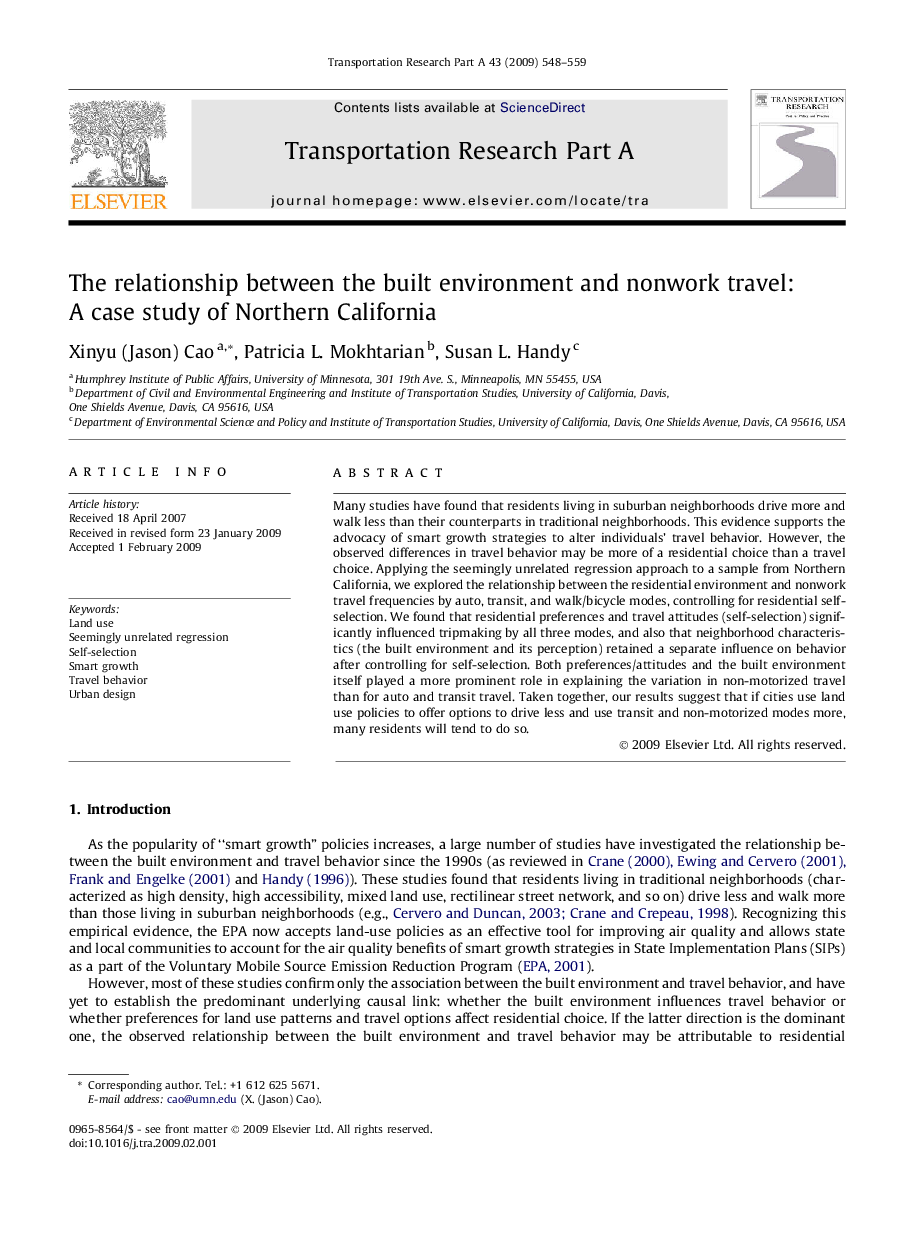| Article ID | Journal | Published Year | Pages | File Type |
|---|---|---|---|---|
| 311097 | Transportation Research Part A: Policy and Practice | 2009 | 12 Pages |
Many studies have found that residents living in suburban neighborhoods drive more and walk less than their counterparts in traditional neighborhoods. This evidence supports the advocacy of smart growth strategies to alter individuals’ travel behavior. However, the observed differences in travel behavior may be more of a residential choice than a travel choice. Applying the seemingly unrelated regression approach to a sample from Northern California, we explored the relationship between the residential environment and nonwork travel frequencies by auto, transit, and walk/bicycle modes, controlling for residential self-selection. We found that residential preferences and travel attitudes (self-selection) significantly influenced tripmaking by all three modes, and also that neighborhood characteristics (the built environment and its perception) retained a separate influence on behavior after controlling for self-selection. Both preferences/attitudes and the built environment itself played a more prominent role in explaining the variation in non-motorized travel than for auto and transit travel. Taken together, our results suggest that if cities use land use policies to offer options to drive less and use transit and non-motorized modes more, many residents will tend to do so.
